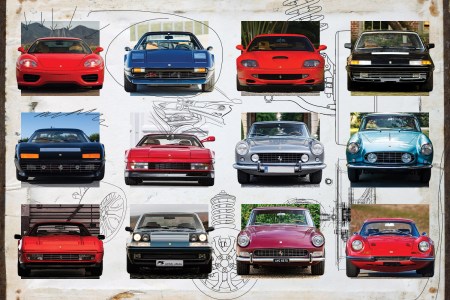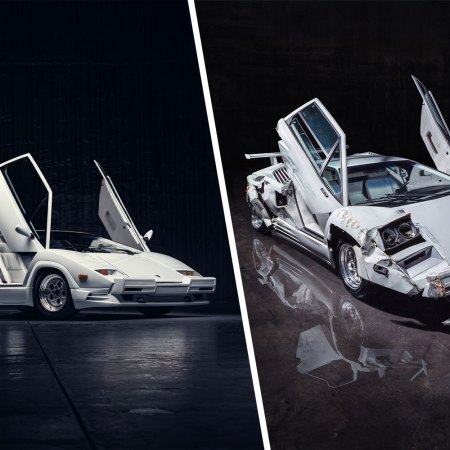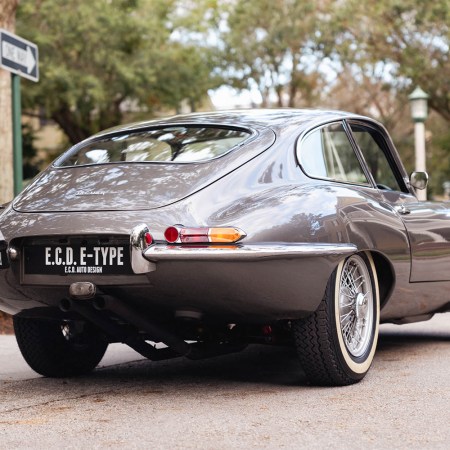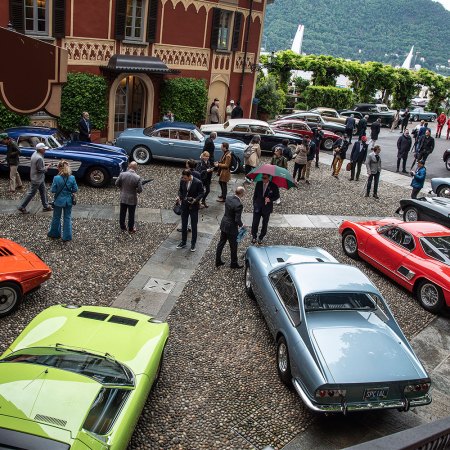If you’re an enthusiast who’s been paying any attention at all to classic car prices over the past decade or so, you’ve no doubt felt the air slowly being squeezed out of your lungs. There’s been an incredible run-up in the market, displayed by everything from Boomer-baiting muscle machines at Barrett-Jackson to high-end European exotica sold by RM Sotheby’s. Throw in the pandemic bubble when it seemed like the prices of even previously affordable Radwood-era machinery went through the roof and it can feel like the entire classic car hobby has been hit by a rising tide of valuations.
It should come as no surprise, then, that institutional investors were also paying attention to the blooming financial status linked to collector cars. This has led to a growing number of private funds that use some of the world’s most exclusive vehicles as their stock-in-trade, offering individuals the chance to own not classic cars themselves, but shares in the Ferraris, Bugattis and Mercedes-Benz models that are sending shockwaves from the auction block.
Not all of these collector car investment funds have managed to stick the landing, as there are challenges associated with targeting such a specific commodity that aren’t found in more traditional places to park a dollar. Still, there’s more than a little appeal in penciling yourself in for a piece of an exclusive automobile without having to pay for the requisite maintenance, storage and insurance fees that go with it. And it turns out in some cases, you may still even get a chance to drive part of your portfolio, even if it’s not sitting in your own garage.
Classic Car Investment Fund Basics
As a concept, classic car investment funds are simple: a private equity company acquires a fleet of autos that it feels will appreciate over time, and then opens up to investors who can participate in anticipated profits.
In practice, how these financial instruments are operated can vary considerably. Some companies employ a somewhat complex process in which an individual automobile is redefined as a corporation, with shares offered as equity as part of an IPO. More common, however, is a traditional hedge-fund structure where investors can buy in at various levels, with a typical “2 and 20” fee structure (where a yearly management fee of 2% of asset value is charged, alongside a 20% fee on fund profits).
Where do those profits come from? Whether it’s a corporation or a hedge fund, cash is generated when a vehicle is sold, which only occurs once it has appreciated past its initial purchase price. This plays a key role in how an investment fleet is assembled.
“We look at cars that trade on average about once a quarter publicly, as a minimum, with at least a 20-year history of attractive price increases,” explained Eden Cooper, founding partner of Drift Capital, an asset management firm dealing in collector cars. “We use auction data going back to the mid-1980s all the way to today. These are ‘blue chip’ cars in our eyes, and that’s 90% of all of our investment decision-making. We also consider cars that have maybe a 15-year history or so, like the Bugatti Veyron, but which still have provided a great return.”
The Classic Ferrari Collector’s Guide
A decade-by-decade look at the Prancing Horse’s sports and touring cars, including underappreciated models to know and buying advice to followCooper underscored the firm’s data-driven approach, pointing out that it’s in the best interest of shareholders to acquire the most attractively priced assets on the market, rather than simply assembling a collection of big-name vehicles. This has led his organization to pass on more than a few deals over the past 12 months.
Just in case you are curious as to how many vehicles it takes to start a vehicle investment fund, well, it turns out that quality trumps quantity. Drift Capital, for example, launched in the fourth quarter of 2023 and currently has only three high-end automobiles in its portfolio.
Why Alternatives Remain “Alternatives” in Investing
Alternative asset classes are nothing new. The Knight Frank Luxury Investment Index has tracked the performance of investments in art (up 90% over 10 years), wine (162%), cars (185%) and even rare whisky bottles (373%). With a track record that extends past the decade mark, that means that the unique risks and sticking points associated with funds focused on these areas are at this point well understood. An experienced hedge fund manager, speaking on background, provided this perspective on how these types of investments compare to more traditional equities and bonds.
“Unlike traditional funds, alternative investments are not easily converted to cash,” he told me. “The process of selling these assets can be time-consuming, and may require finding specific buyers — which means having to quickly liquidate an asset, for whatever reason, may lead to a significant discount in price.”
It’s an issue that Cooper was more than willing to acknowledge.
“The biggest risk I see in this asset class is of course liquidity. If you wanted to turn around tomorrow and get top dollar, you may have to sacrifice if you’ve purchased something so rare or specialized that it takes some time to actually vet the pool of potential buyers,” the Drift Capital founder said. He added that alongside high-net-worth families and individuals seeking niche investments, it’s pensions and endowments, which have very long time horizons, that are strong matches for alternative funds like collectible cars.
Moving past liquidity, my hedge fund source also pointed to restrictions on redemption (investors having to wait, potentially a long time, until a sale is made in order to cash in on any profit), the subjective nature of vehicle valuations (a crisis that collapsed the Swiss-managed The Classic Car Fund in 2023), and the fees associated with the niche market expertise and transaction costs that go hand in hand with both acquiring and selling classic cars.
“There are of course benefits, too,” he said. “There’s a strong potential for high returns due to increasing rarity or demand of the asset in question, and of course there’s a very low correlation with traditional types of investments, which can be appealing for those seeking to diversify their portfolios outside of traditional stocks or real estate.”
Ownership at a Distance Isn’t for Everyone
Perhaps unique in the collector car investing world, at least compared to what you’ll find on the stock exchange, is the ability to actually purchase outright and then slide behind the wheel of a vehicle of your own. While it’s rare to have enough cash on hand to buy an entire corporation and install yourself as chairman of the board, it’s certainly not outside the realm of possibility for wealthy individuals to plunk down a few hundred thousand dollars and declare themselves CEO of the driver’s seat.
According to Brian Rabold, Hagerty’s vice president of Automotive Intelligence, a collector car fund makes sense for those who want to outsource the work required to vet, acquire, store and maintain a car, or for someone who is comfortable with their “ownership” experience being reduced to a financial transaction. That being said, even for collectors of more modest means, dropping a few zeros from those investment prices can yield returns both financial, and, well, spiritual.
“The old-fashioned option is still an alternative,” said Rabold. “Doing your own research and buying a $20,000 or $30,000 car that’s trending up can provide a modest dividend for those who will hold a car for five years or more. The monetary payoff may not be as big, but the emotional upside will be. If you buy and drive what you love, you can’t really lose.”
The visceral aspect of investing in classic cars isn’t lost on Cooper, either. In fact, Drift Capital is in the process of building a secondary fleet that shareholders will have the opportunity to sample firsthand. These higher-mileage, though still appreciating, automobiles may give the fund an edge when courting investors who thrill to the sound of a high-performance exhaust note.
“It’s important to me that these cars are not just shuttled away into some dark warehouse never to be seen again. That pulls against the fabric of what it means to be an automotive enthusiast,” said Cooper. “So it’s important for us to not only provide access for more mainstream investors to invest in a $2 million [Porsche] Carrera GT, let alone a fleet of cars of that value, but also get to experience some of the best drivers cars in the world. It’s my goal to grab a Carrera GT that has 20,000 or 30,000 miles, for example, that we could put a few thousand miles on over the coming years and it’s not going to make a material dent on the price.”
Hopefully not a literal dent in the investment, either.
This article was featured in the InsideHook newsletter. Sign up now.

























